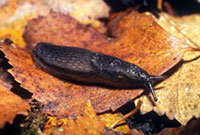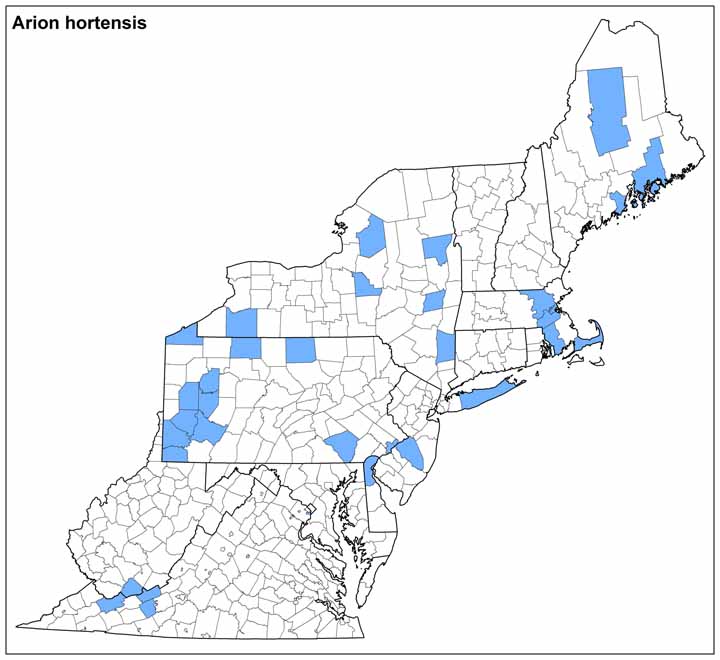Land Snails

Photo(s): Most Arion hortensis have this overall dark color with side stripes. Image © Roy Anderson.
Click photo to enlarge.
Arion hortensis (Férussac, 1819) (non-native)
Family: Arionidae
Common name: Garden Arion
Identification
Length: 25-40 mm
Arion hortensis is gray or brown to black above, with a poorly-defined dark band on each side (Kerney & Cameron, 1979). It has a yellow, orange, or reddish sole, and a yellow or orange mucus color (which colors the sole). It lacks the small dark vertical stripes often seen on the foot fringe of Arion subfuscus, and is smaller when adult. As others of its family, it has a mantle that covers the forward part of its upper surface. This slug is not a single species, but represents three similar-looking animals.
Ecology
Arion hortensis is introduced from Europe, and in eastern North America is widespread in developed environments such as yards, nurseries, and farmland, where it can be a pest. In the Northeast, adult animals appear in spring and fall, suggesting two cohorts each year (Chichester & Getz, 1973). Up to three dozen eggs are deposited in leaf litter and hatch in four weeks.
Taxonomy
Arion hortensis as reported in the past (and often today) is actually complex of three cryptic species - A. hortensis, A. distinctus Mabille, 1868, and A. owneii Davies, 1979 (Davies, 1979). The latter two species are not reported from Virginia, as yet.
There are no synonyms for Arion hortensis.
Distribution
In eastern North America, Arion hortensis is distributed from Canada to the upper Midwest and south to the Mid-Atlantic states (NatureServe, 2013). It is also found on the West Coast and interior West. In Virginia this animal is reported from some western counties.
Conservation
NatureServe Global Rank: G5
Ken Hotopp 1/2013
Range Map (click to enlarge)


